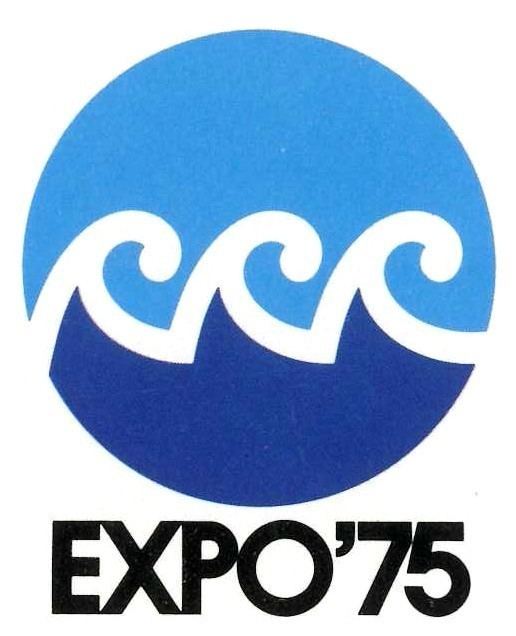BIE-class Specialized exposition Building Aquapolis | Name Expo '75 Visitors 3,485,750 | |
 | ||
Motto The sea we would like to see Area 101.17 hectares (250.0 acres) | ||
Expo '75 (Japanese: 沖縄国際海洋博覧会, Okinawa kokusai kaiyou hakurankai) was a World's Fair held on the island of Okinawa in Japan from July 20, 1975 to January 18, 1976.
Contents
History
Expo 75 was conceived, in part, to commemorate the American handover of Okinawa to Japan in 1972. The theme of the exposition was the oceans, and focused on oceanographic technologies, marine life, and oceanic cultures. The motto was “The sea we would like to see" (Japanese: 海-その望ましい未来, Umi - sono nozomashii mirai).
The event was located on the western end of the Motobu Peninsula, with a site area of 1,000,000 square metres (including sea areas). Thirty-seven nations participated, along with eight domestic and three international organizations. The keynote speaker on opening day was American author James A. Michener.
The exposition is the given reason for the construction of the Nakagusuku Hotel.
Expo 75 site
The site was divided into four “Clusters” in which there were pavilions and exhibits:
Fish Cluster
Peoples and History Cluster
Science and Technology Cluster
Ships Cluster
There was also EXPO Port, EXPO Beach, and an amusement park named EXPO Land.
Highlights
The centerpiece of Expo 75 was the Aquapolis a floating city designed by Japanese architect Kiyonori Kikutake. It was envisioned as a concept of how humans could live harmoniously on the ocean, and a prototype for marine communities. The Aquapolis was constructed at a shipyard in Hiroshima, Japan, and then towed to the Expo site. The facility was funded by the Japanese government, and cost 13 billion yen. It was thirty-two meters high, and had a one-hundred square meter deck.
The Expo Transit System featured two types of automated, electric transport vehicles: The "Expo New City Cars" (KRT) ran on a 3.7 km track almost the whole length of the site, there were three stations. The Expo Future Cars (CVS) track was at the north end and connected the Fish Cluster with Expo Land via five stations.
Post-Exposition
After the Expo was over, the site became Okinawa Commemorative National Government Park (国営沖縄記念公園), also known as Ocean Expo Park. Most of the exhibits were removed, although the Aquapolis was retained as an attraction and eventually hosted four million visitors. As years passed, the number of visitors to the Aquapolis declined and it was closed in 1993. In October 2000, the Aquapolis was towed away to Shanghai to be scrapped.
The Okinawa Churaumi Aquarium and Tropical & Subtropical Arboretum were later constructed on the site.
